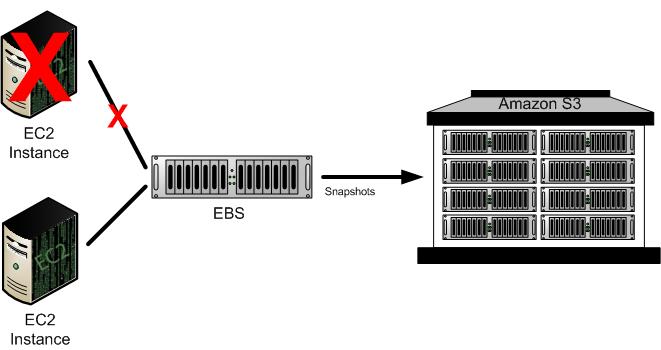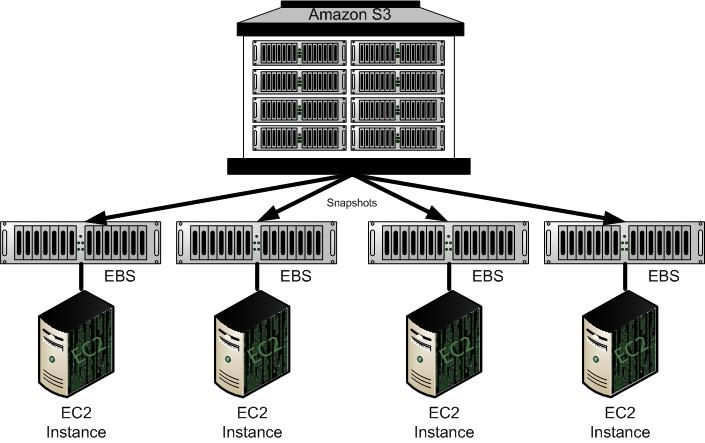Amazon EBS Use Cases
This section describes common Amazon EBS use cases.
Data Survival of Instance Failure
Amazon EBS is designed to allow you to attach any instance to a storage volume. In the event you experience an instance failure, your Amazon EBS volume automatically detaches with your data intact. You can then reattach the volume to a new instance and quickly recover.

-
You are running an Amazon EC2 instance that is attached to an Amazon EBS volume, when your Amazon EC2 instance fails or is experiencing problems.
-
To recover, you detach the Amazon EBS volume from your instance (if it has not already automatically detached), launch a new Amazon EC2 instance, and attach the Amazon EBS volume to the new instance.
-
In the unlikely event the Amazon EBS volume fails, you can create a new Amazon EBS volume based on the most recent snapshot of your failed volume.
Volume Instantiation Using Snapshots
Amazon EBS snapshots allow you to quickly launch new volumes, using a previous snapshot as a starting point for those new volumes.

-
You are running a web service with a large data set.
-
When the data is ready, you can store a snapshot of your volume to Amazon S3 for long term durability.
-
When traffic and resource usage increases, you can launch a new volume from the snapshot, launch a new instance, and then attach the new volume to the new instance.
-
If traffic decreases, you can shut down one or more Amazon EC2 instances and delete their Amazon EBS volumes.
Data Persistence After Shutting Down Instances
Amazon EBS volumes exist separately from the actual instances and persist until you delete them. This allows you to store your data without leaving an Amazon EC2 instance running.
-
You run an instance periodically to perform a batch processing job on a large and growing data set.
-
At the end of your job, you shut down the Amazon EC2 instance, but leave your Amazon EBS volume running.
-
The next time you process the data set, you launch a new Amazon EC2 instance and reattach it to your existing Amazon EBS volume.
Using this model, you can process and store your data set indefinitely, only using the processing and storage resources that you require
Large Data Sets
Amazon EBS offers larger volumes than provided by Amazon EC2 instances. You can create up to one TiB Amazon EBS volumes.